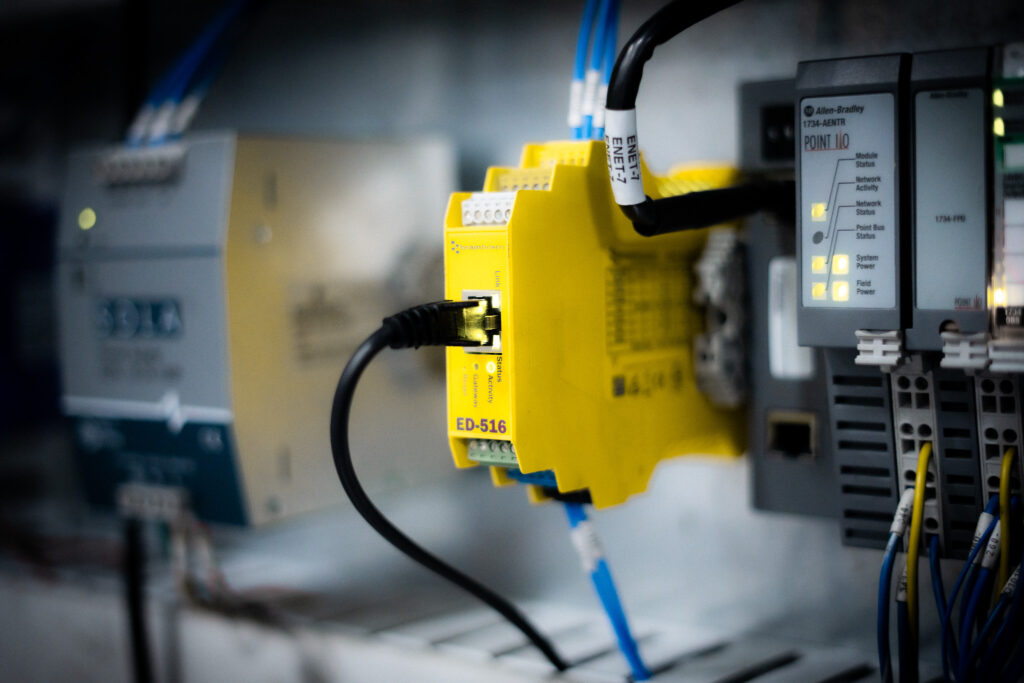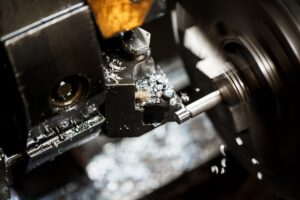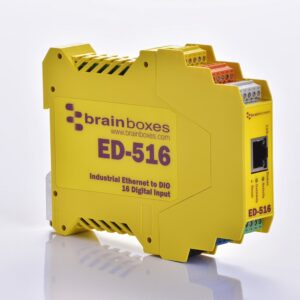With an increasing number of vehicles on the roads, there’s more demand to reduce CO₂ emissions and increase fuel efficiency. Die-casting is an eco-friendly manufacturing processes in which molten metal is poured into steel, reusable moulds to increase sustainability, reduce costs and save time. Using easily recyclable and cost-effective materials, CastAlum collects data to aid in the monitoring of the shop floor and to capture production events. As they continue to develop a factory management system, using Brainboxes Remote IO modules, CastAlum are able to remotely collect real-time data to maintain high productivity levels with no delay.

Brainboxes Remote IO device installed at CastAlum
Manufacturers can reduce emissions by using automotive die-casting, which uses a metal moulding process to produce parts from molten metal. The metal is cooled down and solidified into parts, which are then machined into shape. This process enables cars to be as lightweight as possible due to the manufacturing of lightweight components through die-casting. As a result, the die-casting process reduces waste and saves time and costs for manufacturers and customers.
CastAlum, a global supplier for aluminium die casting and machining, produces steering gear housing, transmission cases, and safety-critical suspension knuckles. Using Remote IO devices from Brainboxes, they are continuing to develop a factory management system in-house to help them further automate and improve their die-casting processes.

For one element of this bespoke system, CastAlum needed a mechanism to send signals from the die casting machines to the software’s database via an API. Communicating directly with the machines and their software controls was not only technically difficult and expensive, but also came with increased security and safety risks. Relying on human interaction with a digital system would always mean a degree of latency in communication.
That’s where Brainboxes Remote IO devices came in. As well as their industrial design being perfectly suited for the harsh environments of automotive die casting, Brainboxes provided a perfect interface between CastAlum’s machines and bespoke software. Brainboxes Industrial Ethernet to 16 Digital Input devices are capable of monitoring any input from the machines, from TTL to high-voltage, high-current industrial devices. This provides CastAlum with a simple interface to capture and visualise production events in real-time, with zero latency.
“Implementing these devices has instantly reduced communication latency on the shop floor. There’s an immediacy in the flow of information because everybody is able to know the state of each machine at any given moment” – Nathan Field, Innovation Lead at CastAlum
In addition to tracking production events, CastAlum have also been able to implement the tracking of shots as they are happening. This provides engineers with a wealth of information, from simply logging parts produced, cycle times, shift efficiency, and tooling life. This data is collected in real-time and presented on digital signage throughout the factory. Utilising Remote IO, CastAlum have clear visibility of parts-production data to improve management of the shop floor.
“People can view the data, at all times, on their own devices. So everyone, wherever they are, can always know how each machine is performing at any given moment during the course of a shift, day, week, month, or production run.” – Nathan Field, Innovation Lead at CastAlum
By using Brainboxes Remote IO devices, CastAlum are continuing to achieve their goal of attaining the highest levels of productivity and quality. Supervisors and engineers are freed from the administrative requirement to update systems manually and can instead rely on receiving real-time information from the machines themselves. Using devices from Brainboxes such as the ED-516 provides them with a wealth of information about the machines, including their status and shot counts. Using this information, employees are able to quickly identify issues and gain a more holistic view of the production floor.
-
ED-516
$280.67 Add to cart


